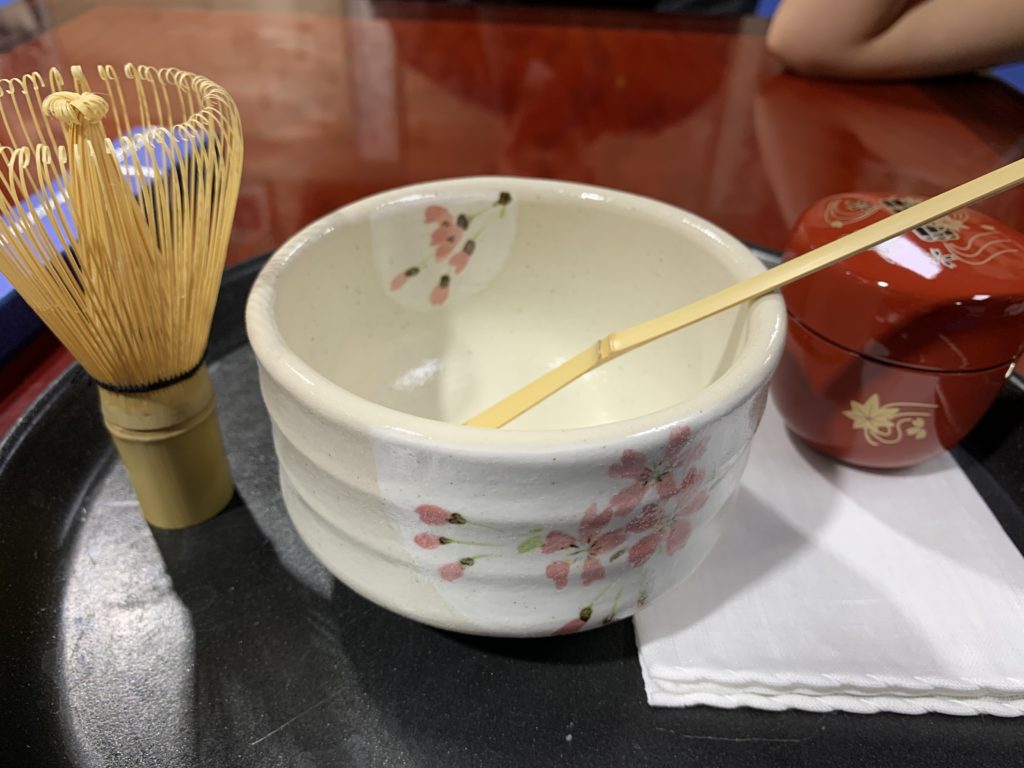Yesterday after class we reviewed the making of traditional Japanese Macha Tea. The history of matcha in Japan is said to commence in the 12th Century, when Zen monk Eisai [栄西] (1141-1215) brought tea seeds he had gathered on a study trip to China. In the 8-9th Century however, Buddhist Monks Saichō [最澄] (767-822) and Kūkai [空海] (774-835) had already brought tea seeds from China. But at that time tea was processed into compressed cubical bricks or cakes, and it was not until the following century that a powdered kind of tea, resembling what we nowadays perceive as matcha, became the standard.

How To Prepare
First things first, put the kettle on and grab yourself a mug or if you want more authenticity, try using a chawan, a traditional Japanese tea cup.
Once the kettle has boiled, wait for a minute or two so that the temperature of the water is approximately 80°C. If the water is too hot, your tea may become too bitter.
Add a small teaspoon of matcha powder to your cup and then fill with approximately 60ml of hot water.
Using a chasen, or matcha whisk, mix the powder in with the water so that no lumps remain in the tea. Mix for a minute until the tea has lots of small bubbles on the surface and appears slightly frothy.
Your tea is now ready so sit down, relax and enjoy your green tea, perhaps with a small Japanese sweet on the side.
Tips and Information
– If you live in an area with hard water, try using a water filter to purify the water before you boil it. This will give you a cleaner tasting tea.
– Try adjusting the amount of water and matcha used until you find the right taste for you.
– Traditional matcha green tea is much bitter than the regular green tea so you might need something sweet to balance the taste.
